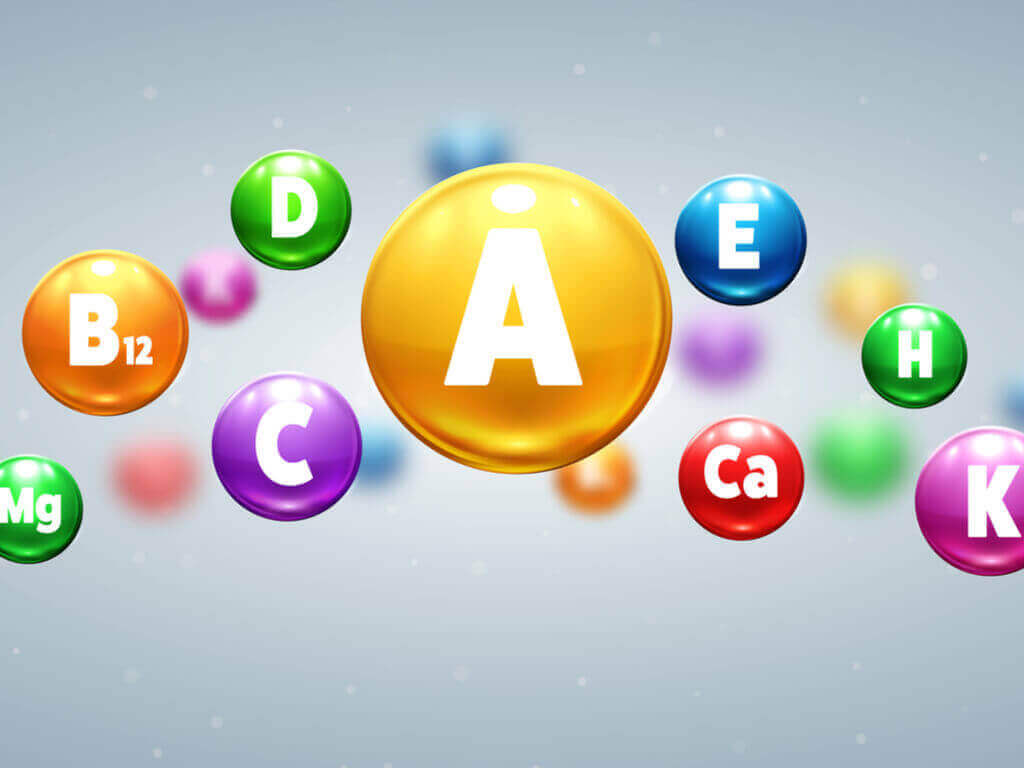Hypervitaminosis: The Excess of Vitamins

Hypervitaminosis is a rare condition caused by an excess of vitamins in the body. This problem doesn’t tend to lead to a harmful consequence for health. However, when vitamin concentrations are higher than the body’s needs and aren’t eliminated through the urinary tract, they can cause a shock as well as harmful toxicity for metabolism.
What are vitamins?
Vitamins are complex organic substances that trigger different functions in the body. Their assimilation is necessary in small quantities, which is why we know them as micronutrients.
The body doesn’t synthesize most vitamins, except for D, K, B1, B2, and folic acid. Because of this, their contribution must be external, through the diet.
Each one of the vitamins exerts a function that’s unique and irreplaceable in the metabolic processes of the organism. In this way, both a deficit and an excess of these substances will affect the metabolic processes of the body. Below, we’ll look at the most frequent types of hypervitaminosis.

An excess of vitamins: Vitamin A
Hypervitaminosis A refers to an excessive reserve of vitamin A in the body, also known as retinol.
The main cause that triggers this condition is the misuse of vitamin supplements. Instead of consulting a doctor about it, many people self-medicate without knowing the consequences that this habit can cause. Among the adverse effects of these supplements we can highlight the following:
- Fetal defects: A pregnant woman must be excessively careful with vitamin supplements and control the ingestion of this vitamin. It’s more dangerous during the first trimester of pregnancy
- Liver problems
- Alterations in the central nervous system
- The decrease in the bony density
Also, the symptoms and signs that a person suffering from this condition suffers vary. Below, you’ll find a list of a series of the most characteristic symptoms:
- Anorexia and weight loss
- Nausea and vomiting
- Amenorrhea
- Increased susceptibility to infection
- Insomnia
- Irritability
Another characteristic sign that has no danger to health is hypercarotenosis. It consists of an excess of carotenes that are deposited under the skin producing a yellowish color in the palm of the hands.
Read also: What Are the Benefits of Carrots?
An excess of vitamins: Vitamin D

En excess of vitamin D is another common cause of hypervitaminosis. Although sunbathing is the best-known way to obtain vitamin D, hypervitaminosis D is highly unlikely no matter how much sun exposure you get.
Nor is the intake of foods rich in this vitamin a common cause, except for an extreme excess of fish oil.
Therefore, just as in the case of vitamin A, the cause of this condition is usually the misuse of vitamin supplements. Nowadays, some tables express the maximum tolerable quantities of vitamins for our bodies.
There are two very characteristic symptoms of this condition, which are the following:
- Hypercalcemia: It consists of a considered increase in the levels of calcium in the blood. This situation leads to another series of symptoms such as nausea, vomiting, mental alterations, loss of appetite and weight, kidney stones, and joint and muscle pain.
- Calcinosis: This term refers to the formation of calcium and phosphate deposits in soft tissues such as the skin and kidneys.
Hypervitaminosis: Vitamin E
Like the other two cases, the use of vitamin E in vitamin supplements is the main cause of this condition. For that reason, you shouldn’t take or administer vitamins without the supervision of a doctor or nutritionist.
Although it can also cause hypervitaminosis, vitamin E has been considered safe in large doses since its discovery. However, when the dose exceeds 800 IU, symptoms such as the following may occur:
- Diarrhea
- Fatigue
- High blood pressure
- Liver problems
- Bleeding
- Decreased resistance to bacterial infections
Discover: Foods Rich in Vitamin E
Conclusion
Hypervitaminosis isn’t very common. What’s more, the main cause of the same is the misuse of vitamin supplements. For that reason, it’s fundamental to follow the recommendations of a doctor or a nutritionist.
Finally, hypervitaminosis of soluble vitamins isn’t common, since, as soluble vitamins, the body eliminates these excesses through sweat or urine. However, this is not the case with liposoluble vitamins, which accumulate in the body and lead to the above-mentioned conditions.
All cited sources were thoroughly reviewed by our team to ensure their quality, reliability, currency, and validity. The bibliography of this article was considered reliable and of academic or scientific accuracy.
- Alarcón-corredor, O. M. (2007). La Hipervitaminosis A : una enfermedad multisistémica. Revista De La Facultad De Farmacia.
- García Rodríguez, A. M., Sánchez Velasco, M. J., Fernández Pérez, G. C., San Miguel Hernández, A., Fernández García, N., & Garrote Andrade, J. A. (2017). Hipervitaminosis B12 y cáncer de recto. Revista Del Laboratorio Clinico. https://doi.org/10.1016/j.labcli.2016.09.007
- Garcia Doladé, N., Cereza García, G., Madurga Sanz, M., & Montero Corominas, D. (2013). Risk of hypercalcemia and hipervitaminosis D induced by calcifediol. Review of cases reported to the Spanish Pharmacovigilance System. Medicina Clinica. https://doi.org/10.1016/j.medcli.2013.02.021
This text is provided for informational purposes only and does not replace consultation with a professional. If in doubt, consult your specialist.








